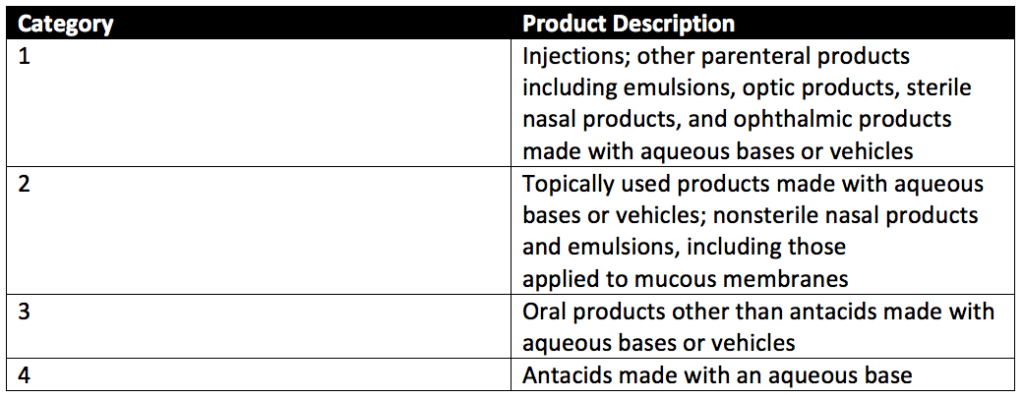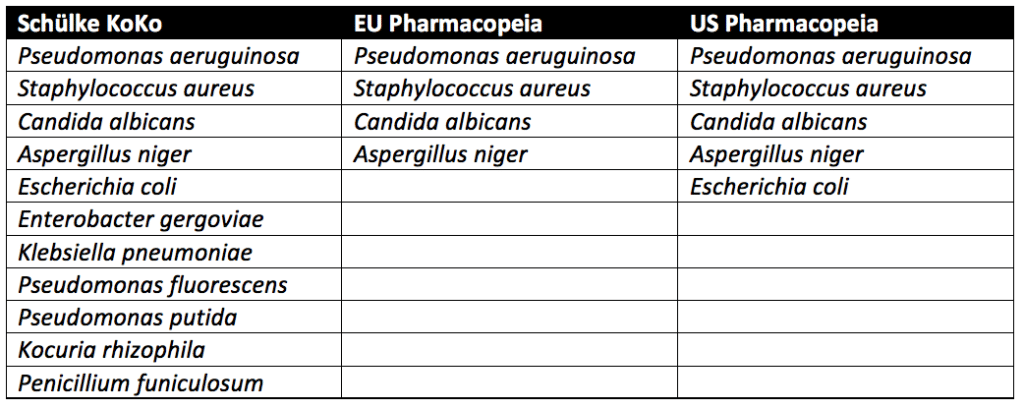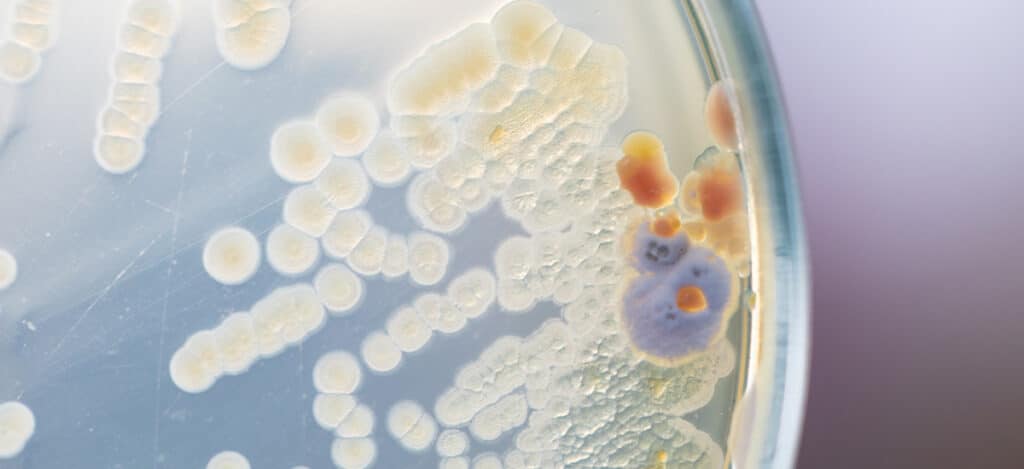Preservative Challenge Testing Vs. Microbial Aerosol Challenge
What is A preservative challenge test (preservative efficacy testing)?
A preservative challenge test, also known as preservative efficacy testing (PET), is a USP 51 regulatory test that determines preservative effectiveness during its shelf life and evaluates how well a product withstands microbial contamination during use. Preservatives are substances mixed into creams, gels, wipes, injectables, and other liquids. In the case of injectables coming from vials, preservative testing and microbial aerosol testing must be performed. Preservatives are used to prevent the growth of bacteria, fungi, and other microorganisms within a medical, cosmetic, household, or food product. Preservatives also help keep the freshness of the appearance of a product and keep its consistency intact over time.
What is microbial aerosol testing and microbial aerosol samplers?
Microbial aerosol challenge testing evaluates the enclosures of filled product vials to ensure that the vial enclosure does not allow microbes to enter following the entry and exit of syringe needles during dosage draws. In a microbial challenge, a product, agent, or process is exposed to (challenged by) microbes. A microbial aerosol sampler is not used for microbial aerosol challenge testing as microbial aerosol samplers are environmental monitoring equipment. Microbial aerosol samplers collect microbes and debris from the air. Manufacturing environments are able to maintain their sterility and prevent contamination using information from microbial aerosol samplers. The cheapest microbial aerosol samplers are settling plates . Further information on microbial aerosol challenge testing can be found HERE. Further information on microbial aerosol samplers can be found HERE.
What products require preservative challenge testing?
Preservative challenge testing for cosmetics can be used to determine the best preservative to use in your topical formulation and the minimum effective concentration needed to preserve the pharmaceutical, food, or biotechnology product being assessed. Topical formulations (gels, creams, ointments, and lotions) comprise a water or oil base that delivers various medications, natural substances (such as herbs), or moisture through the skin. Topical cosmetics contain preservatives to support the stability of the formulation and prevent microbial growth during repeated product use. Preservative challenge testing is also used for parenteral products containing multiple doses. In these products, antimicrobial preservatives inhibit the growth of any microorganisms introduced during repeated insertion and withdrawal to load individual amounts.
Preservative efficacy testing can evaluate four categories of products with preservative challenge testing. These product categories are detailed in Table 1 of USP 51, reproduced below.

What products require microbial aerosol testing?
Microbial aerosol challenge testing is essential for verifying multi-use vial enclosure systems (such as those used for vaccines and other parenteral products). Microbial aerosol challenge testing ensures that the sterile or aseptic vials act as an effective microbial barrier and preserve the product’s sterility even when the outside is exposed to high concentrations of bacteria.
How is preservative challenge testing performed?
Three approaches are used in preservative challenge testing. These approaches come from the Schülke KoKo Test, United States Pharmacopeia (USP), and the European Pharmacopeia.
Schülke KoKo Test vs. U.S. Pharmacopeia vs. European Pharmacopeia
Pseudomonas aeruginosa, Staphylococcus aureus, Aspergillus niger, and Candida albicans must be tested for in all cosmetic products sold in the European Union. In addition to the microbes above, testing with microbes known to lead to spoilage of cosmetic products is recommended but not required. In the United States, the USP guidelines require testing of Escherichia coli in addition to Pseudomonas aeruginosa, Staphylococcus aureus, Aspergillus niger, and Candida albicans. Spoilage microbes are not needed for PET. In contrast to the pharmacopeia tests, which only evaluate pathogenic microbes, the Schülke KoKo test evaluates product spoiling microorganisms. Schülke KoKo test’s spoiling microorganisms are based on decades of cosmetic testing experience from Schülke & Mayr in Germany.
USP preservative efficacy testing evaluates cosmetic products by exposing them to a single microbial strain at a time. Additional details on USP preservative challenge testing, which follows similar procedures to the European Pharmacopeia, can be found through reading our articles on Preservative Challenge Testing And USP 51 and Preservative Efficacy Testing For Medical Devices. In contrast, for the Schülke KoKo test, the single cultivated microbes are brought together into a mixed suspension to challenge the cosmetic product. A new mixed suspension is prepared for each of the six inoculation cycles for Schülke KoKo testing. Since the Schülke KoKo test uses a mixed microbe inoculation, it simulates microbial exposure of a product during production, filling, and use. Indeed, a product would likely be exposed to multiple microbes at once instead of one at a time. Overall, though different from the USP and European Pharmacopeia methods, the Schülke KoKo Test is a reliable test method for assessing the efficacy of antimicrobial preservation of cosmetic products.

First, cultures of Candida albicans (ATCC No. 10231), Aspergillus brasiliensis (ATCC No. 16404), Escherichia coli (ATCC No. 8739), Pseudomonas aeruginosa (ATCC No. 9027), and Staphylococcus aureus (ATCC No. 6538) are prepared. Stock cultures of these organisms are prepared by centrifuging an ATCC culture removing residual media from the prior culture, and resuspending the microorganisms in a sterile suspension fluid. The suspension fluids for each microorganism referenced above are prepared at a microbial count of about 1 × 108 colony-forming units per milliliter (CFU/mL).
Preservative efficacy testing is performed in five sterile, capped containers. Suppose the product’s original container is sterile, can be entered aseptically, and holds an appropriate product volume. In that case, the original filled product containers may be used. Each of the five product samples is injected with a test suspension of either Candida albicans, Aspergillus brasiliensis, Escherichia coli, Pseudomonas aeruginosa, or Staphylococcus aureus. Note that each product sample is exposed to only a single microbe of the five listed, and all microbes are exposed to the product during testing. The microbial test suspension injected is between 0.5%- 1% of the volume of the product under assessment and is at a concentration of 1 × 105 and 1 × 106 CFU/ml of the product for category 1-3 products. The final concentration per ml of product for category 4 products is between 1 × 103 and 1 × 104 CFU/mL.
Each of the five product samples with their respective microbial injections is incubated at a simulated room temperature of 22.5 ± 2.5°C or 32.5 ± 2.5°C depending upon the microbe the product sample is exposed. Microbial counts are taken at 7, 14, and 28 days for most microorganisms tested. The plate-count method is used to determine the number of CFU present in each of the inoculated product samples. This plate-count method is completed in duplicate. Once all counts are taken, the change in log10 of the concentration of CFU/ml is calculated for each microorganism. The requirements for antimicrobial effectiveness are met if no increase in microbial growth for the various organisms tested occurs within the timeframes specific to each organism. are met. No increase in microbial growth is defined as not more than 0.5 log10 units more than the previous microbial growth value.

How is microbial aerosol testing performed?
Microbial aerosol challenge testing evaluates a finished product’s final sterile barrier system’s package integrity by exposing the terminally sterilized, packaged product to aerosolized Bacillus atrophaeus bacteria. After the package exterior has been exposed to Bacillus atrophaeus, the package contents are tested for bacterial contamination.
Microbial aerosol challenge testing begins with the preparation of Trypticase Soy Broth (TSB) media that will be used as a negative control (without bacteria) and positive control (with bacteria). All microbial aerosol challenge methods are performed in an ISO Class 5 laminar flow hood to maintain sterility during the assessment. All positive controls, negative controls, and samples will have adapters for syringe use. For the preconditioning process, ten samples (terminally sterilized vials containing product) and all controls are held statically in an ISO Class 7 controlled environment for 28 days. Five samples are laid down on their side, and five are left standing on their base during the 28 days of storage. Two dose removals will be performed from the TSB vial at 0, 7, 14, 21, and 28 days. After 28 days of sample conditioning, the vial adapter/syringe assembly will undergo the microbial aerosol challenge test.
A Bacillus atrophaeus suspension is prepared for the microbial challenge so that the aerosol chamber receives a minimum of 1.0 x 107 spores when the bacterial is aerosolized. The final suspension concentration is verified using the spread plate method. Once the aerosol chamber with Bacillus atrophaeus suspension has been prepared, the ten test media sample vials with attached syringe-adapter assemblies are loaded, equally spaced and upright, into the aerosol chamber along with the positive controls. Positive controls are created by piercing the vial septum with a sterile 23-gauge needle and leaving the needle in place during the microbial challenge. Negative control vials are not loaded into the chamber. Once all positive controls and sample vials are loaded into the aerosol chamber, the doors are sealed, and the chamber fan is turned on. The prepared Bacillus atrophaeus suspension is loaded to the chamber’s nebulizers, and the suspension is aerosolized until the nebulizers are empty. Samples are left in the chamber for an hour after the suspension has been fully aerosolized. Next, samples are taken out of the chamber, and the exterior is thoroughly disinfected. Finally, all positive control, negative control, and test vials are incubated upright for seven days.
After seven days, all control and sample vials are checked for microbial growth. The level of microbial growth is assessed by streaking the samples onto TSA agar and incubating them. Any growth on the agar plates is compared to Bacillus atrophaeus by Gram staining and direct microscopic observation. Negative TSB vial sterility results indicate that the sterile barrier vial system acted as an effective microbial barrier for the product under the microbial aerosol challenge testing conditions. Positive TSB media vial results indicate that the sample closures were not an effective microbial barrier.
What are the differences between preservative challenge and microbial aerosol challenge testing?
Microbial aerosol challenges use a single bacteria type (Bacillus atrophaeus) to evaluate the integrity of vial elastomeric stoppers for multidose products. In contrast, preservative challenge testing evaluates multiple microbes. Further, preservative challenge testing determines the best preservative to use and the minimum effective concentration needed to preserve multidose parenteral products, topicals products, food, or other healthcare items that contain preservatives. Overall, microbial aerosol challenge testing is more of a package integrity test for parenteral products, and preservative challenge testing is more of an evaluation of the antimicrobial properties of a product.
Summary
Overall, both preservative challenge and microbial aerosol challenge testing are imperative for regulatory approval of pharmaceutical and cosmetic products. These tests ensure that parenteral, topical, and oral products have sufficient antimicrobial activity and packaging integrity to keep patients safe during product use. Preservative efficacy testing evaluates injectables, topicals, orals, and antacids made with an aqueous base for their antimicrobial activity. In contrast, microbial aerosol challenge testing is critical for package integrity testing for multidose parenteral products. All in all, ensure you choose a contract manufacturing organization that can support you with appropriate microbial aerosol challenge testing and preservative challenge testing for your unique cosmetic or parenteral product needs.
MycoScience is a contract manufacturing organization specializing in sterile syringe and vial filling. MycoScience also offers Preservative Efficacy Testing, Sterilization Validations, Bioburden Testing, Cleaning Validations, Microbial Aerosol Challenge Testing, Accelerated Aging, Microbiology Testing, Cytotoxicity Testing, Bacterial Endotoxin Testing, EO Residual Testing, Package Integrity Testing & Environmental Monitoring services medical devices and allied industries. MycoScience is an ISO 13485 certified facility.
References
ANSI/AAMI/ISO 11607-1, 2006/A1:2014, Packaging for terminally sterilized medical devices – Part 1: Requirements for materials, sterile barrier systems and packaging, Amendment 1.
ASTM F1608 – 16, Standard Test Method for Microbial Ranking of Porous Packaging Materials (Exposure Chamber Method).
Technical Report No. 27, Pharmaceutical Packaging integrity, 1998, PDA.
Technical Information Bulletin No. 4, Aspects of Container/closure Integrity, PDA.
Ridder. Revenue of the cosmetic and beauty industry in the United States from 2002 to 2020. Statista. November 2020.
Wolfgang Siegert. Evaluation Of The Microbial Safety Of Finished Cosmetic Products. European Cosmetics. March 2010. 16-19pg.
United States Pharmacopeial Convention. <51> Antimicrobial Effectiveness Testing. Rockville, MD, USA. 2021. (USPC <51>).
Sharing this in your social netwroks

